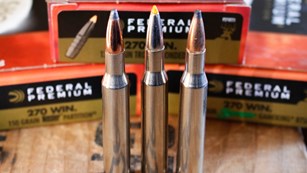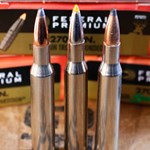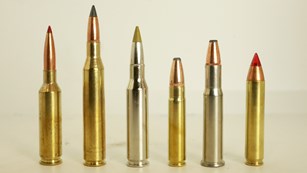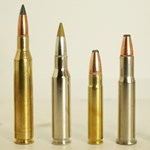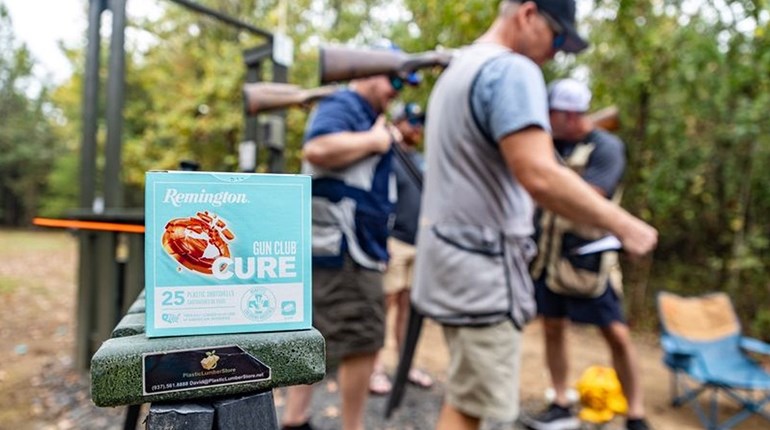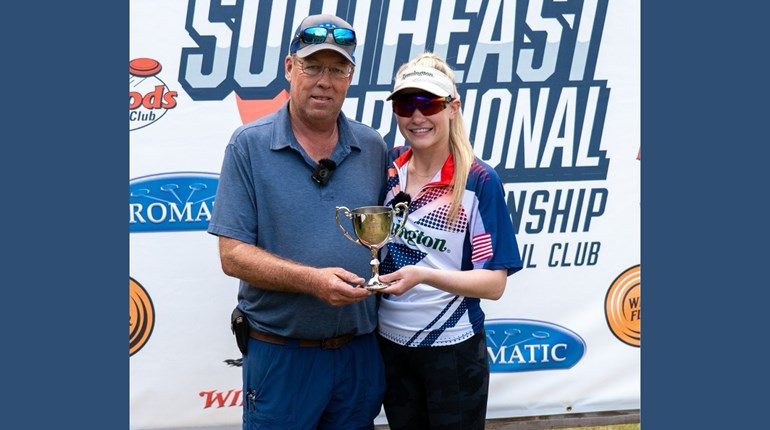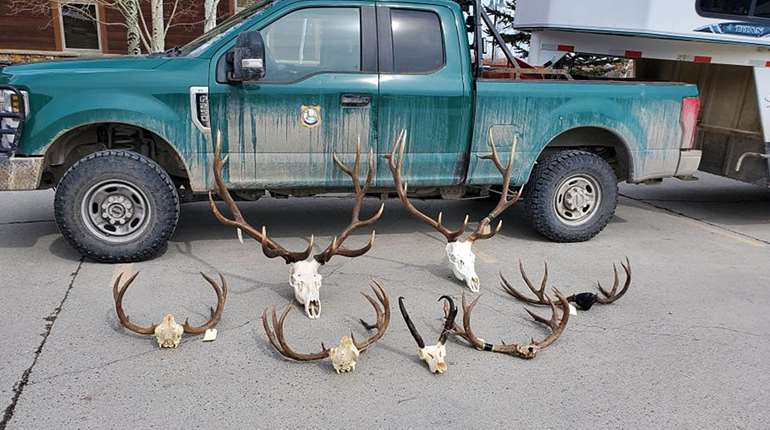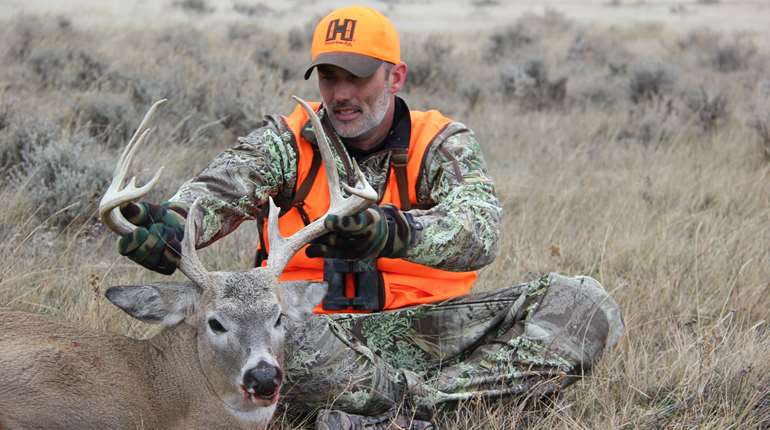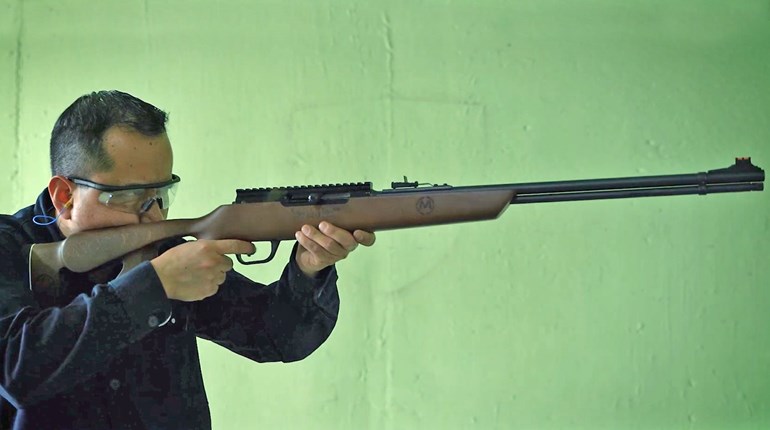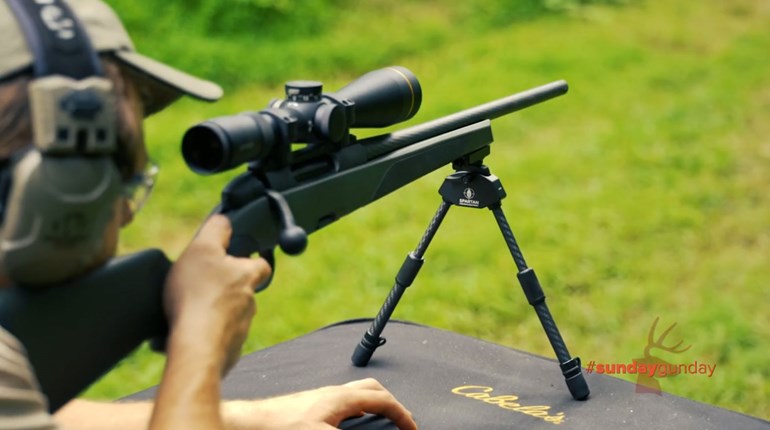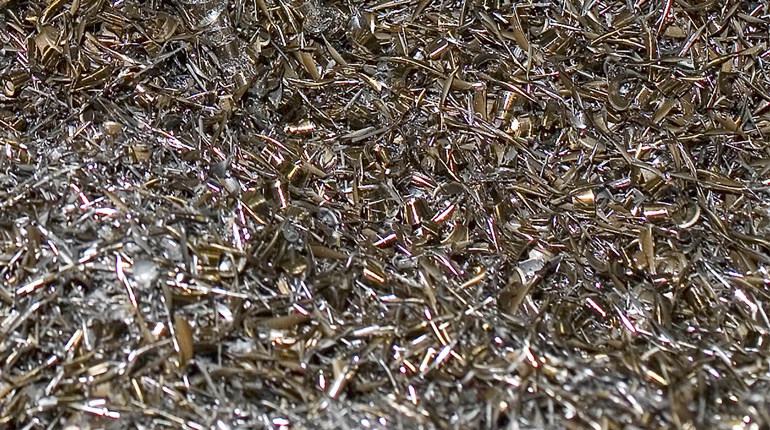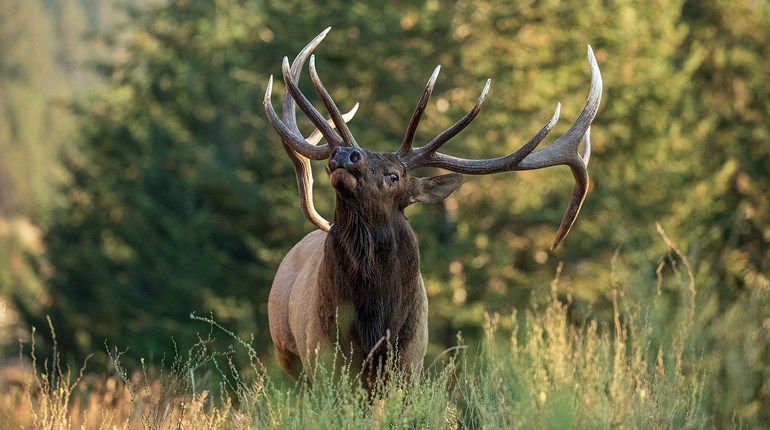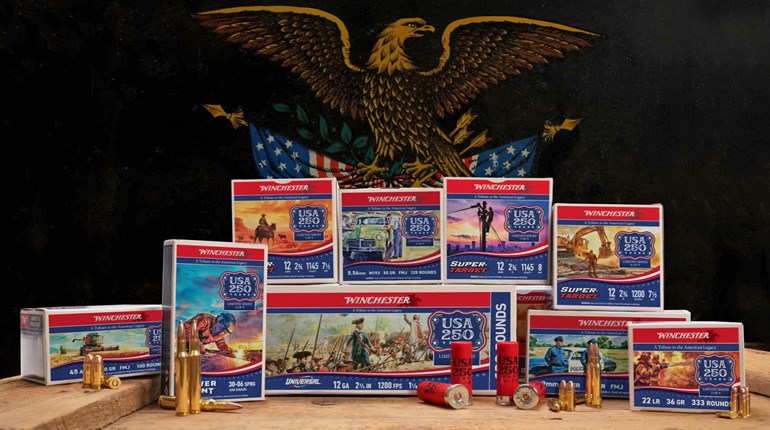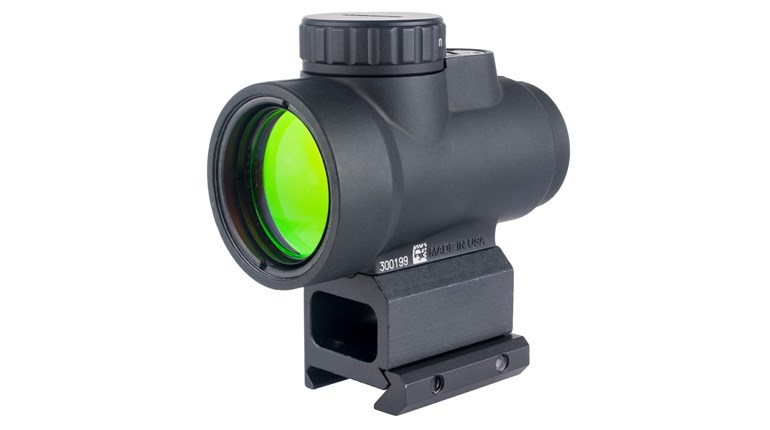For centuries, hunting was a basic necessity for survival. It was simple: Unsuccessful hunters didn’t eat as well as those who regularly brought home meat. Improvements in tools raised success levels and the quality of life, so hunting was usually done with the best and most efficient implements available. As our species became more civilized, learning agriculture and domesticating animals, hunting evolved from a necessity to a sport in much of the world.
Many of today’s hunters still seek out and use the highest-tech hardware available, like magnum rifles with extremely flat trajectories and scopes with powerful magnification. But there is a growing faction of hunters who emphasize the “sport” aspect by returning to more primitive, less efficient means like bows and blackpowder rifles. Interestingly, history seems to be repeating itself within this group, as some of these hunters prefer to wield the latest bolt-action muzzleloader or compound bow.
Enter the modern handgun hunter for whom there appears to be little historical reference. In fact, throughout the history of firearms, the handgun was considered a last-minute defensive tool unsuitable for hunting. Even when Sam Colt created the Patterson revolver in the 1830s, it was not envisioned as a hunting arm. No doubt, at some point on the frontier, particularly as the more powerful Colt Walkers and Dragoons made an appearance, some cowboy somewhere used his handgun to pop some dinner meat, but I suspect this was more the result of an opportune moment than a planned and deliberate hunt.
In the late 1930s, following the introduction of the .357 Mag., Doug Wesson of Smith & Wesson did a great deal of promotional work using the new revolver for hunting big game to show its potential. It can be argued some of the animals taken were realistically beyond the capabilities of the cartridge, but keep in mind it was a promotional campaign. In these kinds of endeavors, we sometimes exceed what’s prudent in order to make a point.
Following the introduction of the .44 Magnum in 1956, a lot of big names went big-game hunting with this new king of the big-bore handguns. One of these was Bob Petersen, who founded a magazine dynasty. The subsequent story and pictures of his Alaska brown bear hunt (in 1964, I believe) with a S&W Model 29 did more to fire me up on handgun hunting than any other single event. Among the other trophies Petersen took with his Model 29 was a 1,500-pound polar bear, which now resides, along with the gun, in the lobby of NRA headquarters in Fairfax, Va., and is part of the NRA National Firearms Museum’s Robert E. Petersen Gallery.
The XP Factor
However, it was in 1962 that the real age of modern handgun hunting began, and it was initiated by a historical throwback, a single-shot pistol designed and built by Remington. The XP-100 (the gun in the lead photo) was chambered for a brand new centerfire cartridge, the .221 Rem. Fireball, which fired a 50-grain bullet at 2600 fps from the handgun’s 103/4-inch barrel. Initial plans to chamber the XP-100 in the .222 Rem. Mag. changed because that case had too much capacity to be efficient in the pistol’s short barrel. Shortening the .222 case by .3 inch resulted in the properly sized and marvelously efficient .221 Rem. Fireball.
For ambidextrous capability, the new pistol—nicknamed the “Fireball” for its chambering—had a symmetrical plastic stock that gave the shooter a thumb rest regardless of whether he shot right- or left-handed. The XP-100’s bolt was doglegged in shape because Remington had found a straight bolt would hit the shooter’s wrist during recoil. Remington also put a plastic rib on the barrel, mainly because the ribbed look was popular on pistols at that time. The rib was mounted to studs that supported the sights, but it floated between these two anchor points. While the factory sights were marginally adjustable to appease shooters who chose not to mount a scope, Remington felt strongly that handgunners would use optics to take advantage of the XP-100’s enhanced performance.
It would be slightly erroneous to say the Fireball took the shooting world by storm. Back in the ’60s, shooters were quite conservative, and the innovations on Remington’s pistol were more than many could digest. For openers, just about everyone agreed the XP-100 was probably the ugliest handgun to ever appear on the planet—even those who acknowledged that it could shoot groups smaller than any other handgun ever seen. It was a bolt-action pistol, something entirely unheard of, and its bolt had a funny shape to boot. Plus it had a plastic stock with this incredible club for a handle. Under sustained firing, some of the stocks warped dramatically and ended up looking like a strange boomerang.
However, when topped with a pistol scope, even one of the rather crude models available then, the Fireball could take rabbit-size game beyond 100 yards. With the advent of Leupold’s 2X handgun scope having long eye relief, the XP-100 could pop prairie dogs and similar critters out past 200 yards in the hands of really good shooters. If you chose to use the factory sights, who cared that they were difficult to adjust? With a muzzle velocity of 2600 fps, there was no need to fiddle with your zero for any varmint within reasonable range. Remington didn’t get rich off the Fireball, but the company kept the gun in production through the ’60s and early ’70s, when handgun silhouette shooters discovered it. More on that later.
I reluctantly admit that I was one of those dedicated Renaissance revolver men who looked at the XP-100 and stuck my finger down my throat to clear my pallet. While I was doing that, some really smart, clear-thinking handgunners took the Fireball afield and enjoyed incredible long-range small-game hunting. A few, like Phil Briggs, who pioneered handgun hunting in Arizona, even customized early Fireballs and rebarreled them with bigger bores for big-game season. It was Phil who introduced me to the XP-100, helping me put many a tasty cottontail into my Dutch oven.
Single-Action Single-Shot
In 1963, Bill Ruger made one of his characteristic brilliant moves and introduced the Ruger Hawkeye to the world. Now we’re communicating, because you’ve already figured out this was another single-shot pistol, but not just another single-shot pistol. The Hawkeye was chambered for the hot new .256 Win. Mag., a .357 Mag. case necked down to hold a .257-caliber bullet. Ruger had experimented with the .256 cartridge in his Blackhawk revolver, but there were problems that led him to try a single-shot.
Truly unique in design, the Hawkeye looked like a single-action revolver. It had the plow-handle grip, a topstrap-covered frame that housed what appeared to be a cylinder, an 81/2-inch barrel, and the same rugged, adjustable sights that were on the Blackhawk. In fact, the Hawkeye was a Blackhawk revolver, but in place of the cylinder was a block of metal that manually rotated a few degrees to expose the breech so that a single round of ammunition could be inserted directly into the chamber. It was basically a miniature artillery-type breechblock system. After a cartridge was chambered, the rotating breechblock swung back into place and locked behind the loaded round. Until the breechblock was locked into firing position, the hammer could not be cocked nor the trigger pulled. The Hawkeye was only produced through 1964, at which point Ruger had enough guns in inventory to fill the sporadic orders received through the early ’70s.
I don’t remember seeing a Hawkeye until several years after it went out of production.
Aesthetically, I much preferred it to the Fireball, but that was primarily due to its close resemblance to a revolver. At the time I was doing a fair amount of handgun hunting for rabbits, and while the Hawkeye would have been a great gun for that, I was totally preoccupied with cast bullets in .357 and .44 revolvers. By the late ’70s, when I finally developed an interest in single-shot handguns and acquired a Fireball, the Hawkeye had climbed to collector prices. My handgun budget didn’t contain sufficient funding to pick up one of the little Rugers.
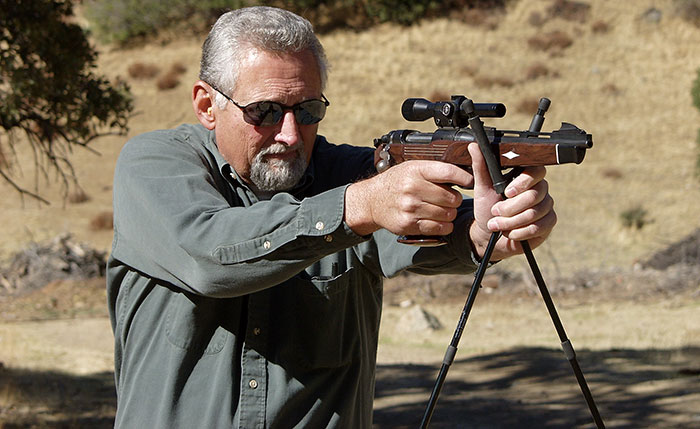
A Return to the Range
In an effort to reclaim some of my youth, I recently borrowed a Remington Fireball and a Ruger Hawkeye. Even better for nostalgia’s sake, both guns were equipped with old-style Bushnell Phantom 1.3X scopes. The Phantom has a large housing around the central part of the tube with an open bottom to clamp on a mounting base. The housing also contains the adjustment knobs that control windage and elevation. For you younger shooters who never saw a Phantom, it has a rather fragile looking tube about half an inch in diameter with a slightly flared eyepiece. As you would expect, field of view is quite limited and eye alignment with the scope’s axis is critical. The Phantom on the Hawkeye was fairly clear, but the one on the Fireball was clouded, which probably accounted for my limited success on the range.
If I owned the guns, my inclination would be to shoot the Hawkeye with iron sights and put a modern pistol scope on the Fireball. That’s because the Hawkeye has decent factory iron sights and balances nicely offhand, whereas the Fireball definitely warrants a solid shooting rest. But the Phantom represented what was available to pistoleros of the ’60s, and since the guns were not mine, I went to the range with everything as issued.
Remington still makes .221 Rem. Fireball ammunition, so I didn’t have trouble obtaining a supply for shooting. Alas, Winchester no longer produces .256 Win. Mag. ammo, but my friend Phil furnished some old factory loads with the Hawkeye he lent to me. He also dug up handloads for both rounds, although he admitted they were probably 20 to 25 years old. I had some newer .256 Win. Mag. handloads developed for another single-shot pistol, which I also threw into the mix.
I shot for accuracy over sandbags, and because of the cloudy scope on the XP-100, I limited the range to 50 yards for both guns. In a nutshell, both turned in 13/4-inch group averages with factory ammo. The Hawkeye also put Phil’s old handloads containing 87-grain Sierra bullets into 13/4-inch groups. It did better with my handloads firing 60-grain Hornady bullets, producing groups that measured slightly more than 1 inch. The XP-100 with the old handloads produced groups of 3 inches. The Hawkeye’s performance was about what I’d expected, and I was pleased with the results. Not so with the Fireball, because I know from past experience with other XP-100s that the pistol can do much better. Still, 13/4 inches at 50 yards isn’t all that bad from a handgun.
Going, Going Big, Gone
When handgun silhouette shooting came along in the mid-’70s, Remington’s Fireball got a new lease on life. A few shooters tried the original pistol in the Production class, and while accuracy results were terrific, the .221 cartridge’s power wasn’t adequate to reliably knock down the heavy metal targets. But modified versions of the bolt gun ruled the Unlimited class. Customized XP-100s built to handle larger cartridges firing .284- and .308-caliber bullets took targets cleanly. The pistol’s accuracy potential meant that shooters had to clean the basic course just to qualify for the real competition in the shoot-offs.
Remington hung on to the XP-100 into the mid-’90s, mainly, I suspect, because of silhouette shooters. During that time, the company upgraded the original model both functionally and aesthetically. The barrel was lengthened to 14 inches, the maximum allowed for Unlimited class in silhouette competition. Remington also chambered it for the 7mm BR cartridge, an excellent choice for silhouettes and medium-size game, along with proven big-game hunting rounds like the .308 Win. and .35 Rem. The later XP-100 variations provided a low-cost solution to handgun hunters who wanted a super-accurate long-range pistol for game larger than varmints. The longer-barreled XP-100 was also chambered for the widely available .223 Rem. cartridge and beautified with a laminated wood stock. With a modern pistol scope, it was deadly on small game at extended ranges. This time around, I was smart enough to acquire one before Remington discontinued production.
In my years of shooting handgun silhouettes, I never saw a Ruger Hawkeye on the firing line. I have to believe that somewhere, sometime, someone fired 40 rounds from the Ruger pistol at the steel critters, but since only 3,105 Hawkeyes were ever produced, maybe not. In the book Ruger & His Guns, by R.L. Wilson, Ruger gun designer Harry Sefried states that he and Mike Walker at Remington used to kid each other about coming out with “the two least popular pistols in the history of handguns.” That may or may not be true, but it must have been believed at Ruger, because the Hawkeye line was closed after just two years of production.
I would be hard pressed to argue that Remington should again produce a version of the XP-100. The company kept the production lines operable for more than 25 years, so it’s not like the gun didn’t receive a fair shake. But I would love to see Ruger bring back the Hawkeye line, even if it is with a limited production run to test the demand. I suspect initial sales would be pretty good, but maybe I’m just fantasizing over how to recover from a missed opportunity. There’s certainly a market for the “right” single-shot handgun as Thompson/Center Arms proved with the Contender a few years after the Fireball and Hawkeye were introduced (see sidebar). Nonetheless, I have to tip my hat to both Remington and Ruger for pioneering the modern hunting handgun, even if I have to say adios to a couple of great ones.


